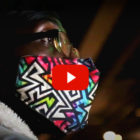
National report highlights severe cost of inadequate juvenile justice system
|
Washington, D.C. – Fight Crime: Invest in Kids released their report “Costly, Punitive Juvenile Justice Approaches Undermine Healthy Adolescent Development,” during a virtual briefing that brought together experts to discuss the urgent need for reform in the juvenile justice system. One key highlight: Rather than helping to fix juvenile crime in America, our current justice system often makes it worse. The report shows that our juvenile justice system often fails to consider the realities of adolescent development. Adolescents, unlike adults, are still maturing cognitively, meaning they lack the capacity to effectively self-regulate, plan for the future, or control impulses.








